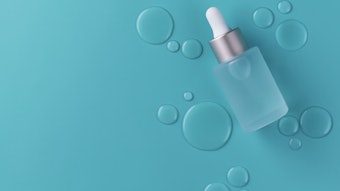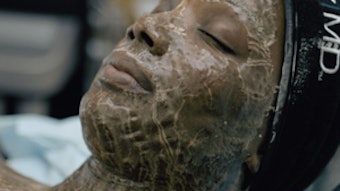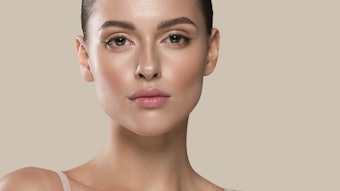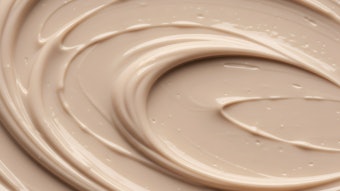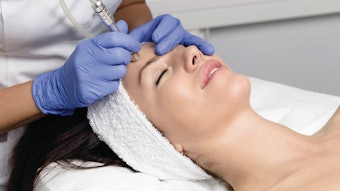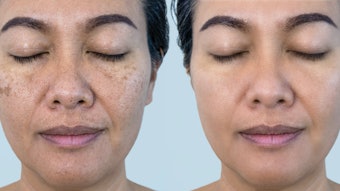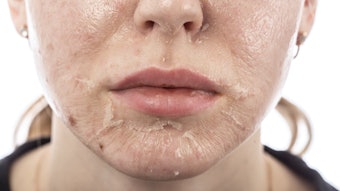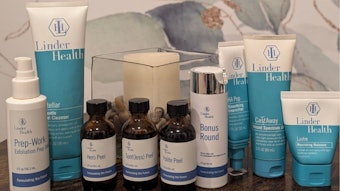
The area around the eyes is one of the first places signs of aging begin to show. This is because the eyes are constantly moving, contributing to dynamic wrinkles like crow's feet. Whether that is to blink, change the line of sight to another direction, squint to read a sign, or make any facial expression, the skin around the eyes plays a critical role in all aspects. It also plays a starring role in developing laxity issues around the eyes.
Did you know we blink an average of 10,000 times daily?
As estheticians, we must understand the dynamics of the delicate skin surrounding the orbital bone so we can accurately address our clients' concerns by providing the right treatment plans and recommendations. In this article, we will examine the unique characteristics of the skin around the eyes, as well as common concerns and best practices for the skin care professional.
Skin Around The Eyes
The skin around the eyes is remarkably different than any other part of the body for several reasons. One of the most obvious is its' thickness. The tender skin on the eyelid is only 0.5 millimeters thick, making it the thinnest skin on the human body. In comparison, the skin on the foot can be up to 3 millimeters thick, while the rest of the face is about 2.0 millimeters thick. Because the skin is so thin, we must treat this area carefully, not only with ingredient selection but with gentle facial massage and delicate product application.
Another way the eyes are unique is because of the rich vascular network that surrounds them. Beneath the surface of the skin, many vessels carry blood and lymph fluids to and from the area, which can be a top contributor to puffiness if lymph fluids stagnate. In combination with the thin skin mentioned above, dark circles are also commonly seen much more easily. When we are tired, blood circulation slows down, and the vessels under our eyes may dilate, causing them to appear more prominent and darker. Additionally, fatigue can cause fluid retention under the eyes, creating a perfect storm of puffiness and dark shadows—a telltale sign that it is time for more sleep.
There are significantly fewer sebaceous glands around the eyes than there are across the rest of the face and body. Because of this, the skin around the eyes is more prone to dryness, flaking, and redness—all of which make traditional practices in anti-aging treatments more challenging and the need for hydration all the more important. These contributing factors cause the eyes to be one of the first places to show the signs of aging skin. From constant movement to thin skin that can't protect from UV damage, lifestyle factors, and perhaps even blue-light damage, the eye area is prone to premature aging and hyperpigmentation issues.
Crows, Crinkles & Wrinkles: The Common Concerns
Dark Circles
There are several reasons dark circles can appear more prominent. The underlying issue is the vast vascular network we discussed previously. Sometimes, genetics can also play a role in their visibility.
It is recommended to get adequate sleep and practice good sleep hygiene. Elevating the head while sleeping will help keep fluids from pooling. Using a silk pillowcase will also help.
Fine Lines and Wrinkles
As we age, the formation of fine lines and wrinkles becomes more prominent due to the decline of collagen and elastin production and the slowing of our cell turnover rates. These factors alone are enough to cause the natural aging process. However, adding the fact that the average human being blinks 10,000 times a day, causing the skin around the eye to contract the same number of times, is bound to cause wrinkling early on. We also know that UVA rays cause rapid cell deterioration and cell damage, so it is essential to wear sunscreen around the eyes and add an additional layer of protection like sunglasses or a hat, where the skin is shielded from sun exposure whenever possible.
Puffiness and Swelling
The puffiness, or periorbital edema, occurs when excessive fluid accumulates in the tissue under the eyes. This happens often after a long night out or a brutal bout of summer allergies. Because the skin is so thin and sensitive, it makes it more prone to fluid pooling. Some of the common causes of puffiness and swelling are excessive salt intake, sleep deprivation, and hormonal fluctuations, including cortisol levels. On the other hand, allergies cause histamines to be released in the bloodstream, which can cause inflammation and swelling, too.
Wrinkle Warriors: Ingredients that Brighten & Tighten
Before we dive into ingredients that help combat the common concerns around the eye area, it is important to note that the molecular weight of chemical compounds is particularly important in the delicate eye area to ensure efficacy. The skin around the eyes is thinner, so it is more susceptible to irritation. However, it also requires ingredients that can effectively penetrate the skin without being too harsh. Ingredients with smaller molecular weights do this well.
For example, hyaluronic acid used in eye creams usually has a lower molecular weight to hydrate more deeply without causing excessive puffiness. Heavy molecules might sit on the surface of the skin and act as a barrier, not providing the essential hydration or benefits at deeper levels. Along with molecular sizes, it is essential to use products that are specifically formulated for the eye area because they are gentler, with lower concentrations of active ingredients to prevent the skin from getting overly irritated. As previously discussed, lacking sebaceous glands, thin skin, and tender area requires TLC. The skin in this area can quickly become irritated, red, or even develop dermatitis if products are too active or potent. Products designed to be used on the face may contain alcohol, fragrance, or oils that could cause irritation around the eye area, too. Many facial serums and moisturizers tend to be too heavy for the delicate eye area, and can potentially clog pores or cause milia. Eye creams often have a lighter texture for this reason.
A Word about Milia
Milia are small, cyst-like bumps that appear when keratin becomes trapped beneath the skin. They are common around the eye area due to heavy creams, sun damage, excessive dead skin, and improper exfoliation, which all cause pores to clog and keratin to build up. To treat or prevent milia, gentle chemical exfoliants and enzyme masks can help. If your state board permits, manual extraction can be done using a sterile lancet and gently pressing the milia.
Performance Ingredients
When selecting products to treat the eye area, you must consider whether they can be gentle and effective. Some of the critical ingredients for common eye care products include retinoids, peptides, hyaluronic acid and vitamins C and E.
Retinol is a vitamin A derivative widely used in skin care products because of its proven ability to increase cellular turnover and boost collagen production. In gentle formulations for the eyes, products with a low concentration of retinol can target fine lines, reduce milia, and give a more youthful look without causing flaking, peeling, or generalized irritation. It is usually recommended that these products be applied at night.
Peptides are short chains of amino acids that act as building blocks of proteins like collagen and elastin. They tell the body to stimulate collagen production, support skin elasticity, and strengthen the skin's barrier. This makes peptides an excellent ingredient for firming the eye area and reducing the signs of aging, day or night.
Hyaluronic acid is a superhero for the eye area as it can provide necessary hydration and plump the skin quickly. This ingredient can be layered over other products, such as vitamin A, for enhanced anti-aging benefits or applied on its own. Because hyaluronic acid can hold up to 1000 times its weight in water, it is essential for the skin to remain hydrated both by ingestion of adequate water to avoid dehydration and by topical application to seal in moisture with products containing ceramides, squalane, or dimethicone to create an occlusive barrier for optimizing skin health. Vitamin A is not the only essential vitamin in the anti-aging arsenal.
Both Vitamin C and vitamin E play an integral role in skin health. Vitamin C is a potent antioxidant that brightens the skin, stimulates collagen production, and protects against free radical damage caused by UV exposure and environmental pollutants. It also reduces hyperpigmentation, which can minimize dark spots and dark circles under the eyes. Because vitamin C does so much heavy lifting, especially during the day, it is recommended to use in morning skin care routines to protect the skin and in evening ones to assist in repairing.
Vitamin E is another powerhouse ingredient that supports cellular repair and protects against environmental damage. Its impressive soothing and moisturizing properties can combat inflammation and help protect the skin's barrier.
Manual Efforts to Combat Common Eye Concerns
Lymphatic drainage around the eyes can reduce puffiness, dark circles, and fluid retention and help increase circulation. The goal is to stimulate the lymphatic system to flush the area gently. The lymphatic system can be stimulated via massage, cooling globes, or gua sha stones. This can be done daily, especially in the morning when puffiness tends to be most prominent. A good rule of thumb is to constantly move from the inner face, outward and downward, toward the lymph nodes located near the temple and ears. Always apply gentle pressure and repeat movements to eliminate stagnation.

